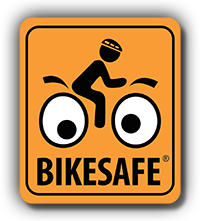Back to main
Learning (or re-learning) how to ride:
Are balancing skills making it difficult for your kids to participate in the Challenge? Or are your kids trying to teach you how to ride?
Don't feel embarrassed - it is never too late to learn. The best part is that bike handling really isn't that difficult, if you learn it the right way. We've created a simple video with all the tips and tricks you'll need. There's no age minimum or maximum with this advice; it is universal.
The art of signaling:
The convenience of the electric turn signal has largely made hand signaling obsolete for automobile drivers, but they've remained the de facto method to indicate your course of direction on a bicycle. Being open-air, sociable vehicles, nothing more complex has really been necessary.
They're quite simple and help others know where you're going, so using them is quite effortless, courteous, and might even prevent a crash.
Yet, hand signals themselves have started to fade into oblivion, in part because we never see them used by drivers anymore. As such, here's a quick guide:
Using streets and bike lanes effectively:
The topic of safe street design will be debated until the end of time; unfortunately, it often feels as if that's how long it'll take to get networks of safe, protected bike lanes built.
Indeed, if you are seeking safer routes (and better bike lanes), do give our Places to Ride page a look.
For now though, this video explains the finer points of using painted bike lanes effectively. The examples here won't necessarily be the best option for many riders with young children, but there may be elements you can put to use in your travels:



